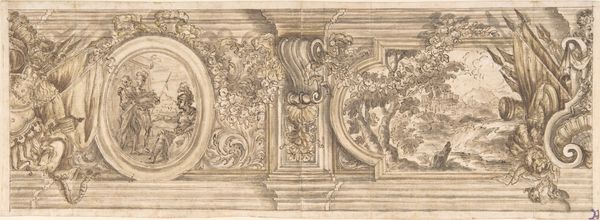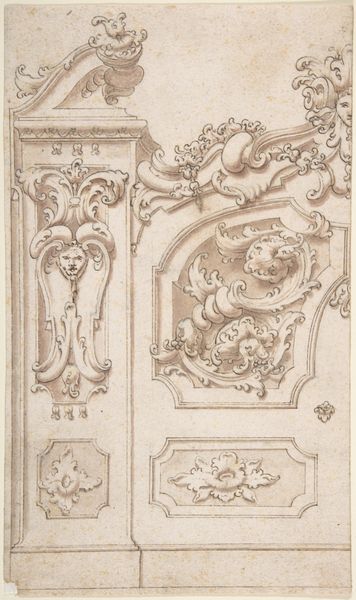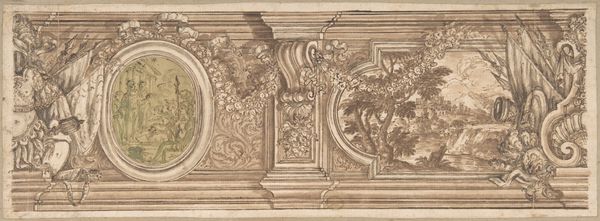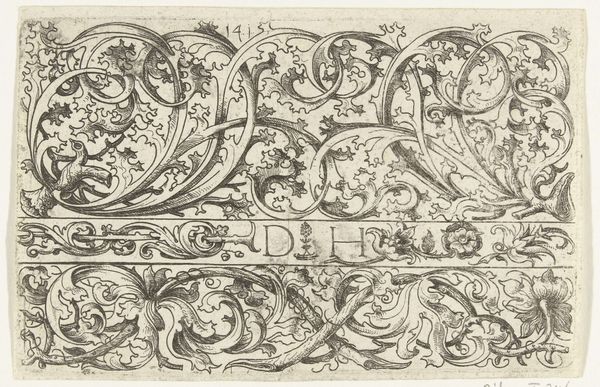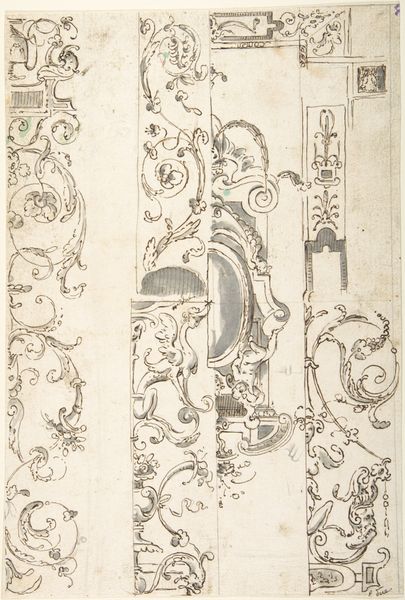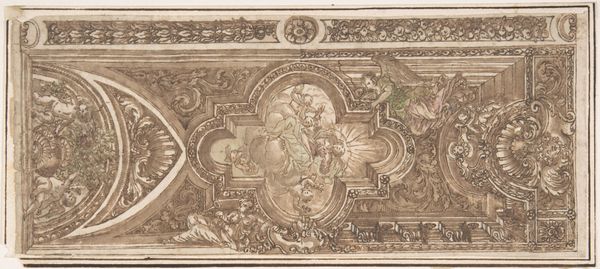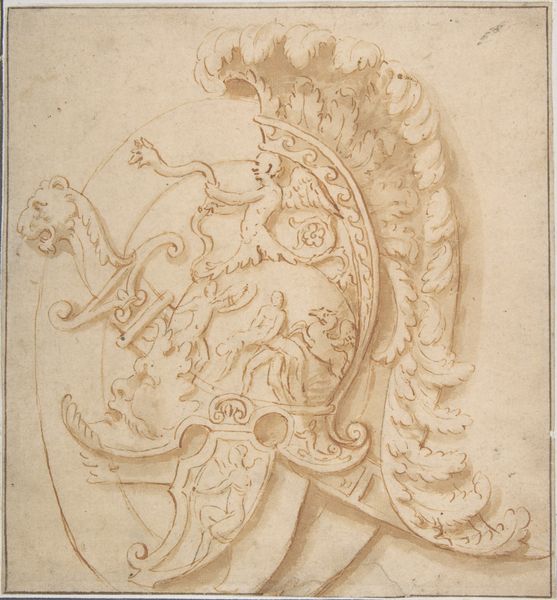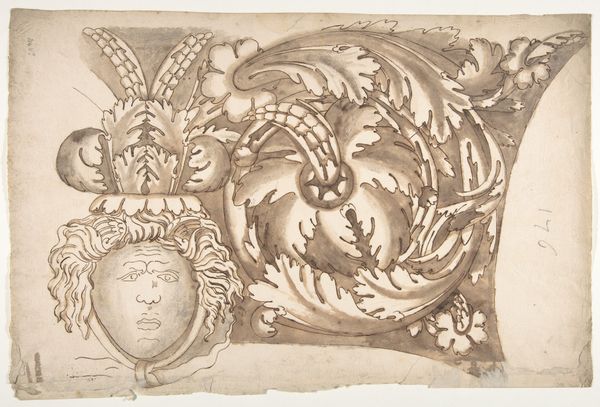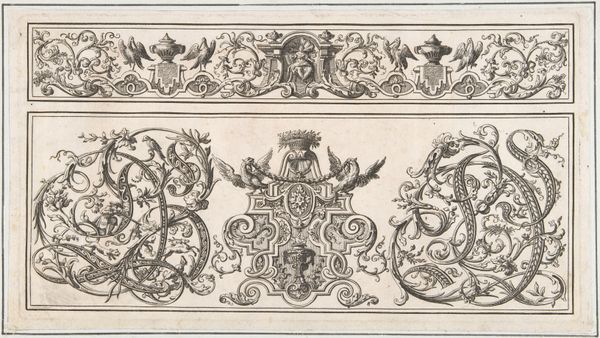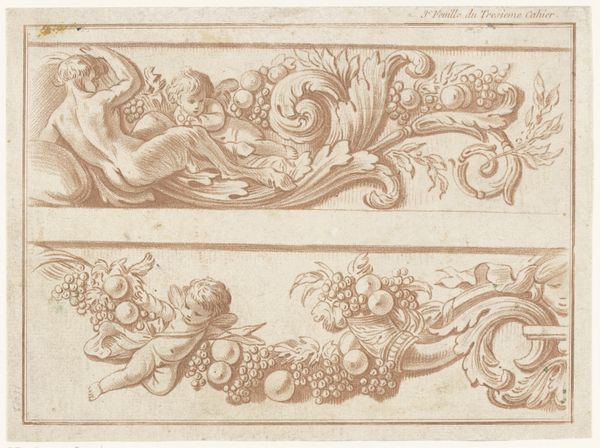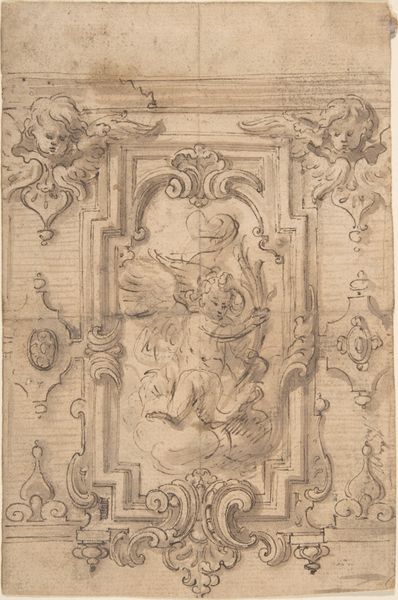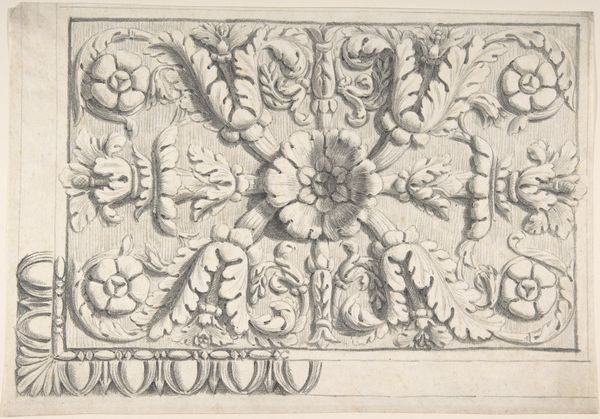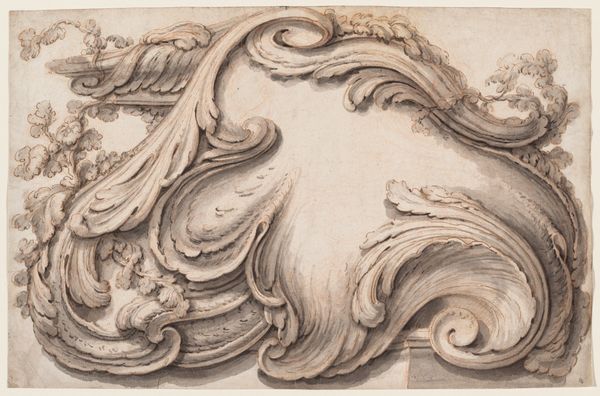
Drawing Showing Two Alternate Designs for an Ornamental Niche or Panel 1600 - 1700
0:00
0:00
drawing, print, paper, ink, engraving, architecture
#
drawing
#
baroque
# print
#
etching
#
paper
#
ink
#
geometric
#
engraving
#
architecture
Dimensions: 4-11/16 x 7-1/2 in. (11.9 x 19 cm)
Copyright: Public Domain
Editor: This is an anonymous drawing, "Drawing Showing Two Alternate Designs for an Ornamental Niche or Panel," made sometime between 1600 and 1700, rendered in ink on paper. The intricate linework depicting baroque ornamentation is incredible, almost dizzying in its complexity. What strikes you most about the visual composition? Curator: The work exemplifies a formal elegance typical of the period, achieved through a complex interplay of geometric forms and organic motifs. Observe the structural balance between the two niche designs; the left is animated by the figure while the right has static carved ornaments. Editor: So, the balance comes from this tension, even though they're asymmetrical designs? Curator: Precisely. Consider the principles of Baroque aesthetics: the dramatic contrast of light and shadow, achieved here through varied line weights. How do these technical choices inform your reading of the overall design? Editor: It's interesting you point that out. Without that shading, all of the ornate details might flatten visually and lose their impact. Are there any particular lines or shapes that you think are essential to decoding the drawing's overall structure? Curator: Note how the artist utilizes the consistent curvilinear line to lead the eye throughout both designs, creating rhythm within each, and also connecting the two niches in the composition. That sinuous line binds what could be disparate elements into a unified visual experience. Does the arrangement succeed to your eye, or are elements unresolved? Editor: That makes sense. Now I notice how those lines create this unifying flow despite the separate structures. For me, that visual cohesion makes the drawing work really well. Thank you, this was insightful. Curator: A pleasure to explore it with you. Focusing on the artist's technique allows for an appreciation that surpasses merely recognizing historical motifs, moving towards comprehending core artistic principles.
Comments
No comments
Be the first to comment and join the conversation on the ultimate creative platform.
